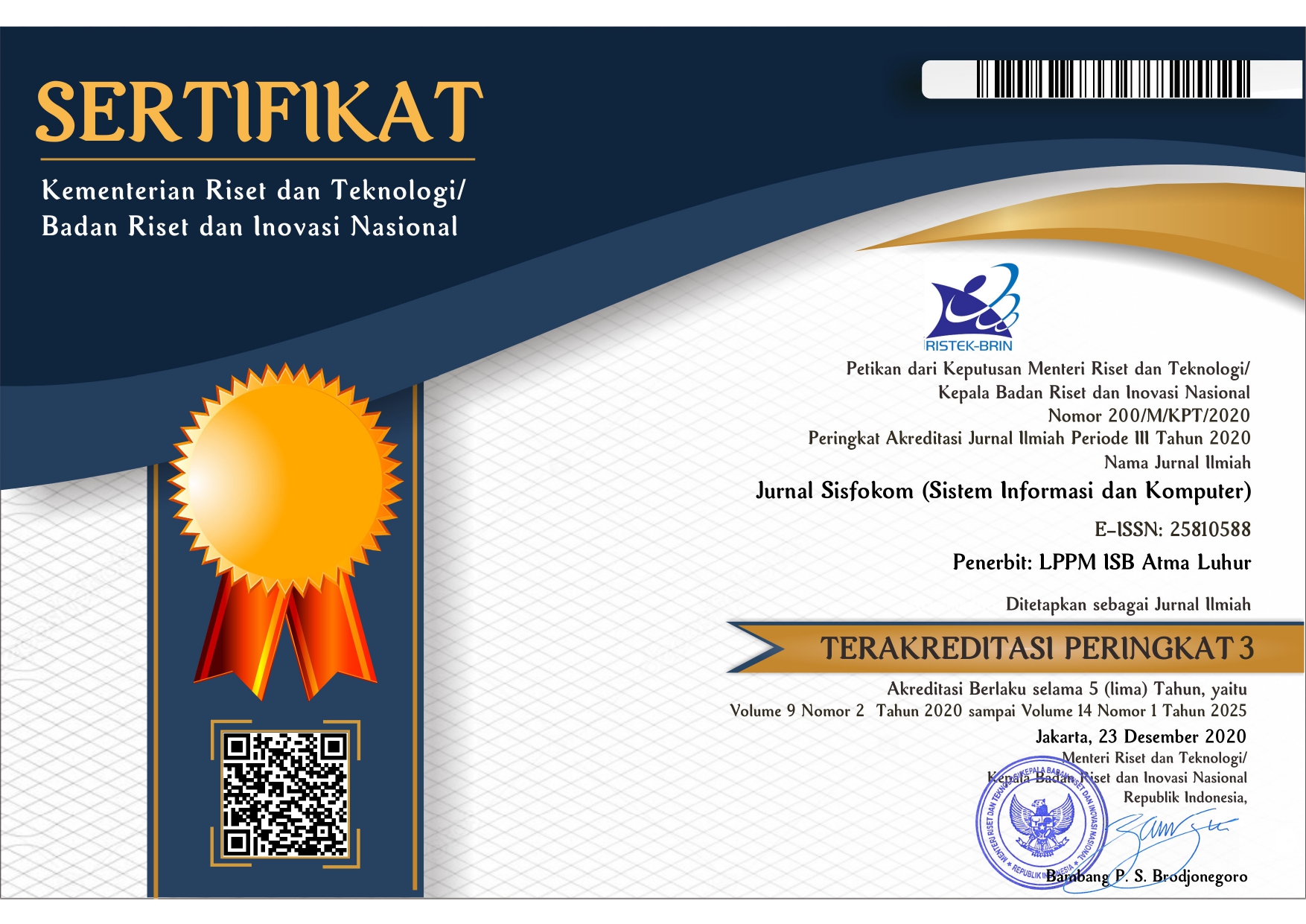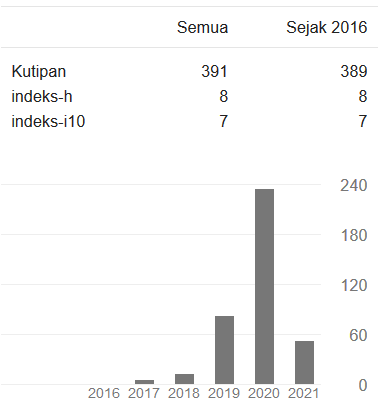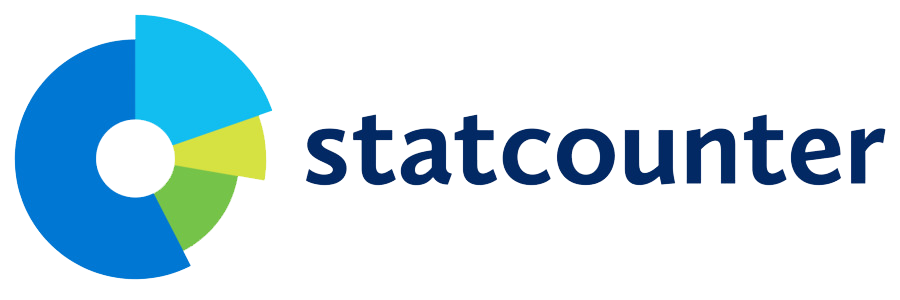Impact of The Covid-19 Pandemic on Student Learning Styles: Naïve Bayes and Decision Tree Classification in Education
DOI:
https://doi.org/10.32736/sisfokom.v13i1.1950Keywords:
Covid-19 Pandemic, Student Learning Styles, Classification Methods, Naïve Bayes, Decision TreeAbstract
The Covid-19 pandemic significantly changed education with social distancing and changes in the learning environment. In this study, one strong reason for the significance of the research is the urgency of changes in students' learning styles during the Covid-19 pandemic. Investigating differences in learning styles before and during the pandemic not only provides deep insight into students' adaptation to these changes, but also provides a foundation for the development of more inclusive and adaptive learning strategies in the future. This study aims to analyze the effect of the Covid-19 pandemic on students' learning styles in an educational context, focusing on the comparison of two classification methods, Naïve Bayes and Decision Tree. The study was conducted by collecting data on students' learning styles before and during the Covid-19 pandemic, using various relevant indicators. The data was obtained based on school survey results and online platforms, involving student characteristics and learning preferences. The data was then analyzed using Naïve Bayes and Decision Tree classification methods to identify significant changes in students' learning styles. The results showed the prediction accuracy of learning style changes with Naïve Bayes 68.75% and Decision Tree 87.50%. Recommendations for educators and education policy makers are to develop inclusive and adaptive learning strategies to meet diverse learning preferences.References
N. Carolina, S. N. Azizah, L. M. N. Sholihah, U. Rosyidah, and P. Purwanti, “Analisis Pengaruh Transisi Pembelajaran Jarak Jauh ke Pembelajaran Tatap Muka terhadap Kesehatan Mental Pelajar Pasca Pandemi Covid-19,” Semin. Nas. Psikol. UAD, vol. 1, no. 0, 2022.
E. ALDIYAH, “Perubahan Gaya Belajar Di Masa Pandemi Covid-19,” CENDEKIA J. Ilmu Pengetah., vol. 1, no. 1, pp. 8–16, 2021, doi: 10.51878/cendekia.v1i1.24.
N. T. Arega, “Mental Health and Psychosocial Support Interventions for Children Affected by Armed Conflict in low-and middle-income Countries: A Systematic Review,” Child Youth Care Forum, 2023, doi: 10.1007/s10566-023-09741-0.
B. L. Brown, “Teaching Style vs Learning Style. Myths and Realities,” ERIC Clear. Adult Career, Vocat. Educ., vol. 26, pp. 3–4, 2003.
B. DePorter and H. Mike, Quantum Teaching Mempraktekkan Quantum Learning di Ruang-Ruang Kelas (Terjemahan). 2004.
B. Saha, S. M. Atiqul Haq, and K. J. Ahmed, “How does the COVID-19 pandemic influence students’ academic activities? An explorative study in a public university in Bangladesh,” Humanit. Soc. Sci. Commun., vol. 10, no. 1, 2023, doi: 10.1057/s41599-023-02094-y.
F. Jaya and A. S. Nurqamarani, “Understanding Student Engagement in Hybrid Learning : An Analysis Impact Digital Literacy and Academic Self-Efficacy,” J. Kependidikan J. Has. Penelit. dan Kaji. Kepustakaan di Bid. Pendidikan, Pengajaran dan Pembelajaran, vol. 9, no. 3, p. 833, 2023, doi: 10.33394/jk.v9i3.7947.
S. Yunus, M. Mariyudi, and M. Bin Abubakar, “Strategies for optimizing learning activities during the pandemic and new normal,” Cogent Soc. Sci., vol. 9, no. 1, 2023, doi: 10.1080/23311886.2023.2175491.
F. T. Dayagbil, D. R. Palompon, L. L. Garcia, and M. M. J. Olvido, “Teaching and Learning Continuity Amid and Beyond the Pandemic,” Front. Educ., vol. 6, 2021, doi: 10.3389/feduc.2021.678692.
J. Singh, K. Steele, and L. Singh, “Combining the Best of Online and Face-to-Face Learning: Hybrid and Blended Learning Approach for COVID-19, Post Vaccine, & Post-Pandemic World,” J. Educ. Technol. Syst., vol. 50, no. 2, pp. 140–171, 2021, doi: 10.1177/00472395211047865.
M. K. Hossen and M. S. Uddin, “Attention monitoring of students during online classes using XGBoost classifier,” Comput. Educ. Artif. Intell., vol. 5, 2023, doi: 10.1016/j.caeai.2023.100191.
L. X. Li and S. S. A. Rahman, “Students’ learning style detection using tree augmented naive Bayes,” R. Soc. Open Sci., vol. 5, no. 7, 2018, doi: 10.1098/rsos.172108.
S. Pokhrel and R. Chhetri, “A Literature Review on Impact of COVID-19 Pandemic on Teaching and Learning,” High. Educ. Futur., vol. 8, no. 1, pp. 133–141, 2021, doi: 10.1177/2347631120983481.
N. S. Mohd Makhtar, J. Idris, M. Musa, Y. Andou, K. H. Ku Hamid, and S. W. Puasa, “High lead ion removal in a single synthetic solution utilising plant-based Tacca leontopetaloides biopolymer flocculant (TBPF),” Process Saf. Environ. Prot., vol. 165, pp. 977–986, 2022, doi: 10.1016/j.psep.2022.05.047.
R. Blanquero, E. Carrizosa, P. Ramírez-Cobo, and M. R. Sillero-Denamiel, “Variable selection for Naïve Bayes classification,” Comput. Oper. Res., vol. 135, 2021, doi: 10.1016/j.cor.2021.105456.
M. S. A. Rahman, N. A. A. Jamaludin, Z. Zainol, and T. M. T. Sembok, “The Application of Decision Tree Classification Algorithm on Decision-Making for Upstream Business,” Int. J. Adv. Comput. Sci. Appl., vol. 14, no. 8, pp. 660–667, 2023, doi: 10.14569/IJACSA.2023.0140873.
M. Karim and R. M. Rahman, “Decision Tree and Naïve Bayes Algorithm for Classification and Generation of Actionable Knowledge for Direct Marketing,” J. Softw. Eng. Appl., vol. 06, no. 04, pp. 196–206, 2013, doi: 10.4236/jsea.2013.64025.
S. N. Safitri, Haryono Setiadi, and E. Suryani, “Educational Data Mining Using Cluster Analysis Methods and Decision Trees based on Log Mining,” J. RESTI (Rekayasa Sist. dan Teknol. Informasi), vol. 6, no. 3, pp. 448–456, 2022, doi: 10.29207/resti.v6i3.3935.
L. E. Contreras Bravo, N. Nieves-Pimiento, and K. Gonzalez-Guerrero, “Prediction of University-Level Academic Performance through Machine Learning Mechanisms and Supervised Methods,” Ingeniería, vol. 28, no. 1, p. e19514, 2022, doi: 10.14483/23448393.19514.
G. F. M. de Souza, A. Caminada Netto, A. H. de Andrade Melani, M. A. de Carvalho Michalski, and R. F. da Silva, “Engineering systems’ fault diagnosis methods,” Reliab. Anal. Asset Manag. Eng. Syst., pp. 165–187, 2022, doi: 10.1016/b978-0-12-823521-8.00006-2.
F. J. Yang, “An implementation of naive bayes classifier,” Proc. - 2018 Int. Conf. Comput. Sci. Comput. Intell. CSCI 2018, pp. 301–306, 2018, doi: 10.1109/CSCI46756.2018.00065.
A. Oussous, F. Z. Benjelloun, A. Ait Lahcen, and S. Belfkih, “Big Data technologies: A survey,” J. King Saud Univ. - Comput. Inf. Sci., vol. 30, no. 4, pp. 431–448, 2018, doi: 10.1016/j.jksuci.2017.06.001.
B. Charbuty and A. Abdulazeez, “Classification Based on Decision Tree Algorithm for Machine Learning,” J. Appl. Sci. Technol. Trends, vol. 2, no. 01, pp. 20–28, 2021, doi: 10.38094/jastt20165.
S. Tangirala, “Evaluating the impact of GINI index and information gain on classification using decision tree classifier algorithm,” Int. J. Adv. Comput. Sci. Appl., vol. 11, no. 2, pp. 612–619, 2020, doi: 10.14569/ijacsa.2020.0110277.
A. Cherfi, K. Nouira, and A. Ferchichi, “Very Fast C4.5 Decision Tree Algorithm,” Appl. Artif. Intell., vol. 32, no. 2, pp. 119–137, 2018, doi: 10.1080/08839514.2018.1447479.
G. S. Reddy and S. Chittineni, “Entropy based C4.5-SHO algorithm with information gain optimization in data mining,” PeerJ Comput. Sci., vol. 7, pp. 1–22, 2021, doi: 10.7717/PEERJ-CS.424.
F. R.-C. Jose Llanos, Víctor A. Bucheli, “Early prediction of student performance in CS1 programming courses,” PeerJ Comput Sci, vol. 9, 2023, doi: 10.7717/peerj-cs.1655.
D. A. Kurniawan and Y. I. Kurniawan, “Aplikasi Prediksi Kelayakan Calon Anggota Kredit Menggunakan Algoritma Naïve Bayes,” J. Teknol. dan Manaj. Inform., vol. 4, no. 1, 2018, doi: 10.26905/jtmi.v4i1.1831.
T. Vafeiadis, K. I. Diamantaras, G. Sarigiannidis, and K. C. Chatzisavvas, “Simulation Modelling Practice and Theory A comparison of machine learning techniques for customer churn prediction,” Simul. Model. Pract. Theory, vol. 55, pp. 1–9, 2015, [Online]. Available: http://dx.doi.org/10.1016/j.simpat.2015.03.003
N. Govind, “Donepezil for dementia due to Alzheimer’s disease,” Br. J. Community Nurs., vol. 25, no. 3, pp. 148–149, 2020, doi: 10.12968/bjcn.2020.25.3.148.
Y. Alpaydin and C. Demirli, “Educational Theory in the 21st Century: Science, Technology, Society and Education,” Palgrave Macmillan, pp. 1–269, 2022, [Online]. Available: https://link.springer.com/10.1007/978-981-16-9640-4
X. Xu, “Revolutionizing Education: Advanced Machine Learning Techniques for Precision Recommendation of Top-Quality Instructional Materials,” Int. J. Comput. Intell. Syst., vol. 16, no. 1, 2023, doi: 10.1007/s44196-023-00361-z.
J. Hu, Y. Peng, X. Chen, and H. Yu, “Differentiating the learning styles of college students in different disciplines in a college English blended learning setting,” PLoS One, vol. 16, no. 5 May, 2021, doi: 10.1371/journal.pone.0251545.
S. Kraus, P. Jones, N. Kailer, A. Weinmann, N. Chaparro-Banegas, and N. Roig-Tierno, “Digital Transformation: An Overview of the Current State of the Art of Research,” SAGE Open, vol. 11, no. 3, 2021, doi: 10.1177/21582440211047576.
C. Wang, Z. Wang, G. Wang, J. Y. N. Lau, K. Zhang, and W. Li, “COVID-19 in early 2021: current status and looking forward,” Signal Transduct. Target. Ther., vol. 6, no. 1, 2021, doi: 10.1038/s41392-021-00527-1.
B. Rittle-Johnson, J. R. Star, and K. Durkin, “How Can Cognitive-Science Research Help Improve Education? The Case of Comparing Multiple Strategies to Improve Mathematics Learning and Teaching,” Curr. Dir. Psychol. Sci., vol. 29, no. 6, pp. 599–609, 2020, doi: 10.1177/0963721420969365.
M. Moss et al., “Development of an Accurate Bedside Swallowing Evaluation Decision Tree Algorithm for Detecting Aspiration in Acute Respiratory Failure Survivors,” Chest, vol. 158, no. 5, pp. 1923–1933, 2020, doi: 10.1016/j.chest.2020.07.051.
Downloads
Additional Files
Published
Issue
Section
License
The copyright of the article that accepted for publication shall be assigned to Jurnal Sisfokom (Sistem Informasi dan Komputer) and LPPM ISB Atma Luhur as the publisher of the journal. Copyright includes the right to reproduce and deliver the article in all form and media, including reprints, photographs, microfilms, and any other similar reproductions, as well as translations.
Jurnal Sisfokom (Sistem Informasi dan Komputer), LPPM ISB Atma Luhur, and the Editors make every effort to ensure that no wrong or misleading data, opinions or statements be published in the journal. In any way, the contents of the articles and advertisements published in Jurnal Sisfokom (Sistem Informasi dan Komputer) are the sole and exclusive responsibility of their respective authors.
Jurnal Sisfokom (Sistem Informasi dan Komputer) has full publishing rights to the published articles. Authors are allowed to distribute articles that have been published by sharing the link or DOI of the article. Authors are allowed to use their articles for legal purposes deemed necessary without the written permission of the journal with the initial publication notification from the Jurnal Sisfokom (Sistem Informasi dan Komputer).
The Copyright Transfer Form can be downloaded [Copyright Transfer Form Jurnal Sisfokom (Sistem Informasi dan Komputer).
This agreement is to be signed by at least one of the authors who have obtained the assent of the co-author(s). After submission of this agreement signed by the corresponding author, changes of authorship or in the order of the authors listed will not be accepted. The copyright form should be signed originally, and send it to the Editorial in the form of scanned document to sisfokom@atmaluhur.ac.id.









